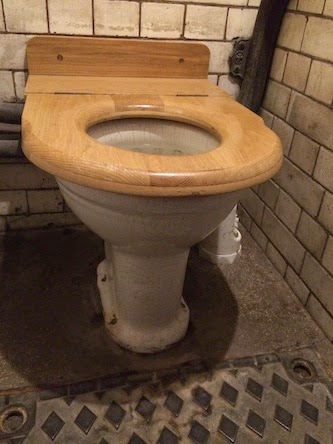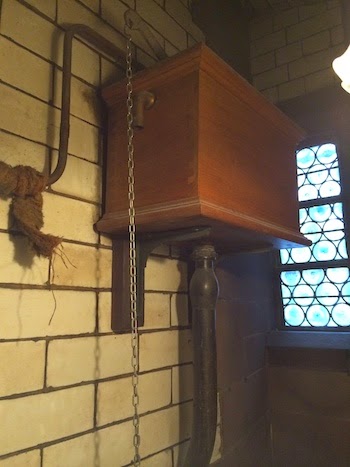 |
| The Oldest Loo You Might Ever Use |
When the John Rylands Library was built in the late 1800’s, flush toilets were all the rage in new construction. It’s not surprising then that the library’s design included mens and ladies restrooms. With the same meticulous care devoted to their collection of books also dedicated to their toilets, the original toilets–now 115 years old–are still operating.
This got me thinking about the invention of the toilet. A quick turn to the modern-day store of knowledge that is Wikipedia (if it’s in Wikipedia, it must be true) reveals that the design of the flush toilet evolved over centuries. Despite the myth that the toilet was invented by the aptly named Sir Thomas Crapper (perpetuated, no doubt, by Bette Midler with a certain song from the movie Beaches), more credit might be given to Sir John Harrington, who, in the early 1600’s, published a paper (no, really) on a design that included a valve and bowl that allowed a washing action. He even installed a royal toilet for Queen Elizabeth I to use, but alas! she thought the modern contraption made too much noise. Without the royal “blessing”, widespread acceptance of the toilet was delayed a few centuries.
Crapper doesn’t even earn second place for the advancement of the toilet. That distinction would have to be awarded to businessman George Jennings in the mid 1800’s. Jennings installed “monkey rooms” (I much prefer this term to bathroom, restroom, loo, or water closet, so I think I will attempt to revive it) at The Great Exhibition at Hyde Park. In true European style, he charged a penny for access. No doubt the extras he threw in, including a shoe shine, enticed many a wary Victorians to “give them a go”.
The monkey rooms were a swooshing success, with thousands of Victorian men and women enjoying blessed relief and shiny shoes at the exhibition. After the exhibition, Jennings convinced the powers that be to leave the toilets, which earned up to £1.000 (that’s one thousand pounds to you Americans) per year.
The highly over-credited Sir Thomas Crapper can really only be attributed with the invention of the floating ballcock valve, which remains to this day the frustration of millions of do-it-yourselfer plumbers. Another crucial component of the modern toilet–the siphon action of the water in the bowl–was invented by Albert Giblin, though it was indeed Crapper who popularized its commercial use.
So the next time you are perched atop one of these modern marvels in your monkey room, remember all those ingenious men, even knights and titans of business, who have contributed to your being where you are today.
 |
| Simple Chain-Pull Valve and Gravity-Fed Water Line |






